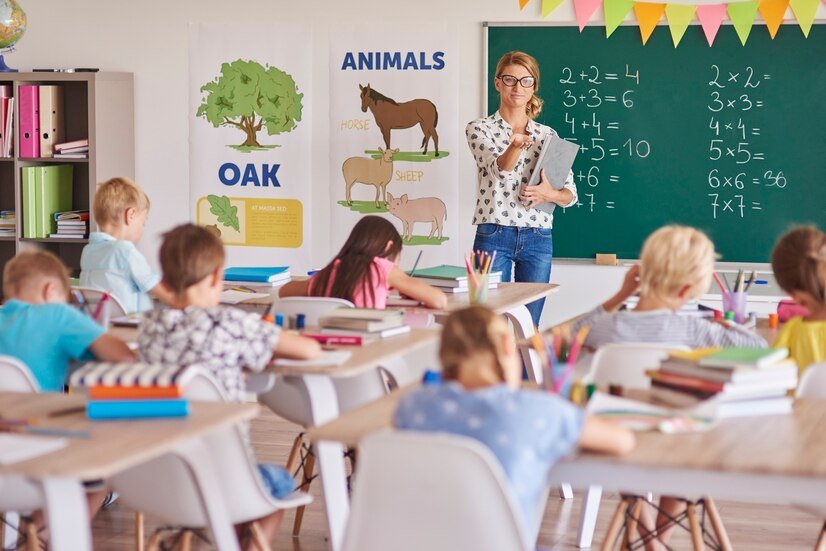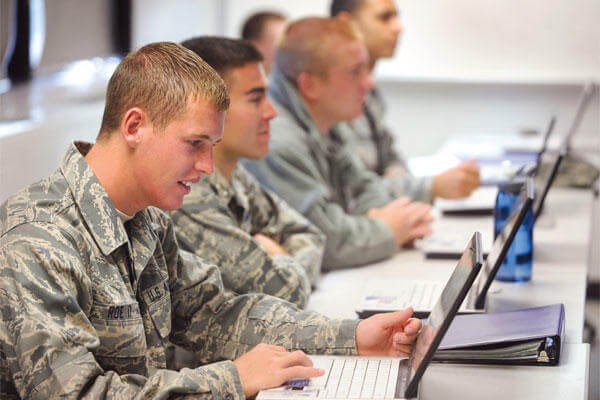Education
Board of Education Governance: Navigating the Evolution of Education Landscape 3 Great
The journey Board of Education governance has been one of continuous evolution, shaping the very foundations of our educational systems.

The journey Board of Education governance has been one of continuous evolution, shaping the very foundations of our educational systems. Understanding the intricacies of the Board of Education landscape is crucial in navigating the complexities of modern education.
Historical Perspectives
Education governance has deep historical roots, with early educational systems often overseen by local authorities. Over time, we have witnessed significant milestones, such as the establishment of formal education boards, shaping the direction of educational policies.
Roles and Responsibilities
Education boards play a pivotal role in shaping educational policies, curriculum development, and ensuring the overall quality of education. Their decisions impact not only students and teachers but the entire community.
Challenges Faced
Despite their crucial role, education boards face various challenges, from budget constraints to societal shifts. Addressing these complexities requires adaptive and innovative approaches to governance.
Technological Influences
The advent of technology has revolutionized education governance. From online learning platforms to data-driven decision-making, technology continues to reshape how boards operate and make strategic decisions.
Policy Changes
Education policies have evolved in response to societal changes. Understanding these shifts is essential for adapting governance structures to meet the dynamic needs of the educational landscape.
Local vs. Federal Governance
The debate between local and federal governance structures continues to influence education policies. While local boards provide tailored solutions, federal oversight ensures standardized practices. Finding the right balance is crucial for effective governance.
Inclusivity in Governance
Diversity in education governance ensures a range of perspectives, fostering inclusivity and equal representation. Boards must actively promote diversity to make well-informed decisions that benefit all students.
Public Perception and Accountability
Public perception plays a significant role in education governance. Establishing transparency and accountability mechanisms builds trust, ensuring that decisions align with the broader interests of the community.
Global Perspectives
Exploring international models of education governance provides valuable insights. Learning from global best practices allows boards to adapt and implement successful strategies in their own contexts.
Future Trends
Predicting future trends in education governance is essential for staying ahead of challenges. Adapting to technological advancements, demographic changes, and global events requires foresight and proactive decision-making.
Collaboration between Stakeholders
Collaboration between boards, educators, and communities is paramount for effective governance. By fostering open communication and partnerships, education boards can create a holistic approach to decision-making.
Community Involvement
Empowering communities in education decision-making fosters a sense of ownership. Grassroots participation ensures that governance aligns with the unique needs and aspirations of local communities.
Evolving Curriculum Standards Board of Education

Governance significantly influences curriculum development. Adapting to changing educational needs requires a flexible approach, ensuring that curriculum standards remain relevant and effective.
Conclusion
the evolution Board of Education governance is an ongoing process that demands adaptability and innovation. Staying informed about historical perspectives, current challenges, and future trends is crucial for navigating the intricate Board of Education landscape effectively.
FAQs
How have education boards evolved over time?
Education boards have evolved from local oversight to more centralized structures, adapting to societal and technological changes.
What challenges do education boards commonly face?
Budget constraints, societal shifts, and the dynamic nature of education pose common challenges for education boards.
How does technology impact education governance?
Technology influences decision-making processes, curriculum development, and the overall operation of education boards.
Why is community involvement crucial in education governance?
Community involvement ensures that education decisions align with the unique needs and aspirations of local communities.
What role does diversity play in education governance?
Diversity in governance ensures a range of perspectives, fostering inclusivity and equal representation in decision-making.
Table of Contents

Education
Eckhart Books: A Journey into Spiritual Awakening
Eckhart Tolle is a renowned spiritual teacher and author whose profound insights into the nature

Eckhart Tolle is a renowned spiritual teacher and author whose profound insights into the nature of consciousness and the human ego have touched millions around the world. Born in Germany in 1948, Tolle’s journey towards spiritual enlightenment began in early adulthood and culminated in a series of transformative experiences that would shape his teachings for decades to come.
Childhood and Early Life
Tolle’s early life was marked by a sense of inner turmoil and existential questioning. Despite achieving academic success, he found himself grappling with feelings of emptiness and dissatisfaction, leading him on a quest for deeper meaning and fulfillment.
Spiritual Awakening
In his late twenties, Tolle experienced a profound spiritual awakening that would change the course of his life forever. This awakening, which occurred after a period of intense inner struggle, brought him into a state of profound peace and clarity, leading him to devote himself fully to the pursuit of spiritual understanding and enlightenment.
Key Concepts in Eckhart Tolle’s Teachings
Tolle’s teachings revolve around several key concepts that form the foundation of his philosophy:
Power of Now
Central to Tolle’s teachings is the concept of the “Power of Now,” which emphasizes the importance of living in the present moment rather than dwelling on the past or worrying about the future. According to Tolle, true peace and fulfillment can only be found in the here and now.
The Ego
Tolle identifies the ego as the primary obstacle to spiritual growth and enlightenment. He teaches that the ego is responsible for much of the suffering and conflict in the world, as it creates a false sense of identity based on attachment to thoughts, emotions, and external circumstances.
Consciousness
Tolle defines consciousness as the underlying essence of all existence, transcending the limitations of the individual ego. By cultivating awareness and presence, individuals can tap into the infinite potential of consciousness and experience true liberation from suffering.
Presence
Presence, according to Tolle, is the state of being fully engaged and aware in the present moment. By practicing mindfulness and embracing the Now, individuals can awaken to the deeper reality of their existence and find peace and fulfillment in every aspect of life.
Popular Books by Eckhart Tolle
Eckhart Tolle’s teachings have been disseminated through a series of bestselling books, including:
“The Power of Now”: A seminal work that explores the transformative power of living in the present moment.
“A New Earth”: An insightful examination of the collective awakening of humanity and the emergence of a new consciousness.
Other Works: Tolle has authored several other books, each offering unique insights into the nature of reality and the human condition.
Impact and Global Reach
Tolle’s teachings have had a profound impact on millions of people worldwide, transcending cultural and religious boundaries. His books have been translated into numerous languages and have inspired readers from all walks of life to embark on a journey of self-discovery and spiritual growth.
Practices and Techniques
Tolle advocates for a variety of spiritual practices and techniques to help individuals cultivate presence and awaken to their true nature. These may include meditation, mindfulness, breathwork, and self-inquiry.
Mindfulness and Meditation
Mindfulness and meditation play a central role in Tolle’s teachings, serving as powerful tools for quieting the mind and accessing the deeper dimensions of consciousness. By cultivating a regular meditation practice, individuals can develop greater clarity, peace, and inner harmony.
Living in the Present Moment
At the heart of Tolle’s teachings is the simple yet profound practice of living in the present moment. By letting go of past regrets and future anxieties, individuals can experience a profound sense of freedom and joy in the Now.
Criticism and Controversies
While Tolle’s teachings have garnered widespread acclaim, they have also attracted criticism from some quarters. Critics have accused him of promoting a simplistic worldview and of oversimplifying complex spiritual concepts.
Eckhart Tolle’s Influence on Modern Spirituality
Tolle’s influence extends far beyond the realm of personal development and spirituality, impacting diverse fields such as psychology, philosophy, and neuroscience. His teachings have inspired countless individuals to embark on a journey of self-discovery and inner transformation.
Applying Eckhart Tolle’s Teachings in Daily Life

The wisdom of Eckhart Tolle can be applied to virtually every aspect of daily life, from relationships and work to health and creativity. By integrating his teachings into our everyday experiences, we can cultivate greater presence, peace, and fulfillment.
Conclusion
Eckhart Tolle’s books offer a profound exploration of the human condition and the nature of reality. By embracing the timeless wisdom of his teachings, individuals can embark on a journey of self-discovery and spiritual awakening, ultimately finding peace and fulfillment in the present moment.
FAQs
How can I incorporate Eckhart Tolle’s teachings into my daily routine?
Start by setting aside a few minutes each day for mindfulness meditation or quiet reflection. As you go about your daily activities, strive to bring awareness to the present moment and observe the thoughts and emotions that arise.
Are Eckhart Tolle’s teachings compatible with my religious beliefs?
Tolle’s teachings are non-denominational and can be adapted to complement a wide range of religious and spiritual traditions. Many people of various faiths have found value in his insights and practices.
What are some practical tips for living in the present moment?
Practice deep breathing exercises, engage in activities that bring you joy and fulfillment, and cultivate gratitude for the simple pleasures of life.
How can Eckhart Tolle’s teachings help me overcome anxiety and stress?
By learning to detach from the incessant chatter of the mind and embracing the peace of the present moment, you can gradually reduce feelings of anxiety and stress.
Where can I learn more about Eckhart Tolle’s work?
Explore his books, attend his lectures or workshops, and engage with online communities dedicated to discussing his teachings.
Table of Contents
Education
Textsheet: A Comprehensive Guide 4
If you have ever found yourself struggling with homework or assignments, you might have stumbled upon Textsheet,

If you have ever found yourself struggling with homework or assignments, you might have stumbled upon Textsheet, a popular online platform offering study resources. However, Textsheet’s rise to fame was short-lived due to legal issues. In this article, we’ll delve into what Textsheet was, its features, the reasons behind its popularity, its downfall, and alternative resources available for students.
A Brief History
Textsheet emerged as a go-to platform for students seeking assistance with their studies. It provided solutions and answers to various questions, primarily sourced from Chegg, an educational technology company. Users could access these resources for free, making Textsheet immensely popular among students worldwide.
Features of Textsheet
Homework Solutions: Textsheet offered detailed answers to textbook questions, making it a valuable resource for students grappling with challenging assignments.
Question Bank: Users could find a wide range of questions and solutions across different subjects and academic levels.
User-Friendly Interface: The platform was simple to navigate, allowing students to quickly find the assistance they needed.
Why Textsheet was Popular?
Textsheet gained popularity for several reasons:
Free Access: Unlike many other study platforms that required a subscription or payment, Textsheet provided its services for free, attracting a large user base.
Comprehensive Solutions: The platform offered detailed explanations and solutions to a vast array of questions, aiding students in understanding complex concepts.
Convenience: With Textsheet, students could easily find answers to specific textbook questions without having to spend hours searching through multiple resources.
Copyright Infringement
Textsheet’s downfall began when it faced allegations of copyright infringement. The platform sourced its content from Chegg, violating the latter’s terms of service and copyright policies.
Legal Actions
As a result of the copyright violations, Chegg took legal action against Textsheet, leading to the platform’s shutdown. In 2019, Textsheet ceased its operations, leaving many students searching for alternative study resources.
Alternatives to Textsheet
While Textsheet may no longer be available, several alternatives exist for students seeking study assistance:
Chegg: Despite the legal dispute with Textsheet, Chegg remains a reputable source of study materials, offering textbook solutions, tutoring services, and more.
Course Hero: Similar to Textsheet, Course Hero provides study resources, including textbook solutions, study guides, and practice tests.
Quizlet: Quizlet offers flashcards, quizzes, and study games across various subjects, helping students reinforce their learning.
Impact of Textsheet’s Closure
Textsheet’s closure left a significant impact on the online education community. Many students relied on the platform for academic support, and its absence forced them to seek alternatives. The incident also raised awareness about copyright issues in the digital learning space.
Future of Online Study Resources

Despite the challenges faced by Textsheet, the demand for online study resources continues to grow. As technology advances, new platforms and tools emerge, offering innovative ways to assist students in their learning journey.
Conclusion
Textsheet served as a valuable resource for students seeking study assistance, but its journey was cut short due to legal issues. While its closure left a void in the online education landscape, alternative platforms like Chegg, Course Hero, and Quizlet continue to support students in their academic endeavors.
FAQs
Is Textsheet still available?
No, Textsheet was shut down in 2019 due to legal issues.
Can I still access Textsheet’s content?
No, the platform ceased its operations, and its content is no longer accessible.
Are there any legal alternatives to Textsheet?
Yes, platforms like Chegg, Course Hero, and Quizlet offer similar study resources legally.
Why did Textsheet face legal issues?
Textsheet sourced its content from Chegg without permission, leading to copyright infringement allegations.
What should I do if I need study assistance now that Textsheet is gone?
Consider exploring alternative platforms like Chegg, Course Hero, or Quizlet for study resources and assistance.
Table of Contents
Education
Unlocking the Power of Teaching: Exploring the Significance of “Ensñar” 2 Great
Teaching Worldwide, people’s brains and destinies are shaped by education, making it an essential part of society.

Worldwide, people’s brains and destinies are shaped by education, making it an essential part of society. The very definition of passing on information and abilities to others is captured by the Spanish word “Ensñar” which means “teach” in English. Teaching is a complex endeavor, and this article delves into its many facets to examine its relevance, methods, difficulties, and potential for transformation.
Understanding the Importance of Education
Education serves as the cornerstone of personal and societal development. It equips individuals with the tools necessary to navigate the complexities of life, fostering critical thinking, creativity, and problem-solving abilities. Moreover, education promotes social cohesion, empowers marginalized communities, and drives economic growth.
Traditional Teaching Approaches
Traditional teaching methods, such as lectures and textbooks, have long been the primary means of instruction. While effective in disseminating information, they often lack interactivity and fail to cater to diverse learning styles.
Modern Teaching Techniques
In contrast, modern teaching techniques emphasize active learning, collaboration, and student engagement. Strategies like project-based learning, flipped classrooms, and experiential learning foster deeper understanding and encourage lifelong curiosity.
Integrating Technology into the Classroom
Technology has revolutionized education, offering innovative tools and resources to enhance learning experiences. From interactive whiteboards to educational apps, digital technologies provide opportunities for personalized learning and global connectivity.
Benefits and Challenges
While technology holds immense potential, its integration into education comes with challenges. Issues such as the digital divide, cybersecurity threats, and information overload underscore the need for thoughtful implementation and digital literacy initiatives.
Cultural Considerations in Teaching
Cultural diversity enriches the educational landscape, shaping perspectives and enriching classroom discussions. Educators must acknowledge and celebrate cultural differences while fostering inclusivity and respect among students.
Tailoring Education to Individual Needs
Recognizing that every student is unique, educators must employ differentiated instruction techniques to accommodate diverse learning preferences, abilities, and backgrounds. Personalized learning plans empower students to reach their full potential and instill a lifelong love of learning.
The Impact of Socioeconomic Factors on Learning
Socioeconomic factors significantly influence educational outcomes, with disparities in access to resources, support systems, and opportunities perpetuating inequality. Addressing these disparities requires systemic reforms and targeted interventions to level the playing field for all students.
Overcoming Educational Barriers
From language barriers to learning disabilities, various obstacles hinder educational attainment for certain individuals. By implementing inclusive practices, providing support services, and fostering a supportive learning environment, educators can help overcome these barriers and promote equity in education.
Empowering Teachers and Students
Effective teaching goes beyond imparting knowledge; it involves inspiring and empowering students to become lifelong learners and active contributors to society. Investing in teacher professional development and student leadership initiatives cultivates a culture of excellence and continuous improvement.
Promoting Lifelong Learning

In today’s rapidly evolving world, the pursuit of knowledge is a lifelong journey. Encouraging a growth mindset and fostering a culture of curiosity and adaptability prepares individuals to navigate challenges, seize opportunities, and lead fulfilling lives.
Conclusion
“Ensñar,” the act of teaching, holds the power to transform lives and shape the future. By embracing innovative methodologies, leveraging technology, and promoting inclusivity, educators can create dynamic learning environments where every individual has the opportunity to thrive.
FAQs
How can technology enhance the learning experience?
Technology can provide interactive simulations, virtual field trips, and personalized learning platforms tailored to individual needs, making learning more engaging and effective.
What role do cultural considerations play in education?
Cultural diversity enriches classroom discussions and fosters empathy and understanding among students. Educators must create inclusive learning environments that respect and celebrate cultural differences.
How can educators address socioeconomic disparities in education?
By providing equitable access to resources, offering targeted support services, and implementing inclusive practices, educators can help level the playing field and promote educational equity.
What are some effective strategies for overcoming educational barriers?
Implementing differentiated instruction, providing accommodations for diverse learning needs, and fostering a supportive learning environment are key strategies for overcoming educational barriers.
Why is lifelong learning important in today’s society?
Lifelong learning enables individuals to adapt to changing circumstances, pursue personal and professional growth, and remain competitive in an increasingly complex and interconnected world.
Table of Contents
Education
Military Education and Training: Shaping Tomorrow’s Warriors 6 Great
Military education and training have always been fundamental pillars in preparing armed forces

Military education and training have always been fundamental pillars in preparing armed forces personnel for the challenges they may face in the line of duty. From ancient times to the present day, the methods and strategies employed in military training have evolved significantly to meet the demands of modern warfare.
Importance of Military Education
Military education serves as the foundation upon which soldiers, sailors, airmen, and marines build their skills and knowledge. It not only imparts tactical and strategic expertise but also instills discipline, leadership, and resilience.
Evolution of Military Training Methods
Traditionally, military training relied heavily on physical drills and rote learning. However, with advancements in technology and changes in warfare tactics, modern training methods have become more diverse and dynamic.
Key Components of Military Education
Military education comprises various components, including academic coursework, physical fitness training, and leadership development programs. These elements work together to create well-rounded and adaptable military personnel.
Specialized Training Programs
Certain branches of the military, such as special forces units, require specialized training programs tailored to their unique missions and objectives. Additionally, technical training is essential for personnel operating advanced equipment and weaponry.
Role of Technology in Military Education
Technology plays a crucial role in enhancing military training effectiveness. Simulation software and virtual reality platforms allow soldiers to engage in realistic combat scenarios without the risks associated with live exercises. Furthermore, artificial intelligence (AI) is increasingly being utilized to personalize training modules and provide real-time feedback to trainees.
Challenges in Military Education and Training
Despite the benefits of modernization, military education and training face several challenges. Budget constraints often limit the resources available for training programs, while the rapid pace of technological advancement requires constant updates to training curricula and equipment.
Innovations in Military Education
In response to these challenges, military organizations are adopting innovative approaches to education and training. Adaptive learning techniques tailor instruction to individual learning styles, while gamification elements make training more engaging and immersive.
International Collaboration in Military Education
Collaboration between nations is essential for sharing best practices and promoting interoperability among allied forces. Joint training exercises and exchange programs facilitate cross-cultural understanding and cooperation.
Military Education and Civilian Integration
Many skills acquired through military education are transferable to civilian careers, making veterans valuable assets to society upon their return to civilian life. Programs that assist in transitioning military personnel to civilian roles help bridge the gap between the military and civilian sectors.
Future Trends in Military Education

Looking ahead, the future of military education will continue to be shaped by advancements in technology and changes in geopolitical dynamics. Emphasis will be placed on mental health and resilience training to ensure the well-being of service members in an increasingly complex and uncertain world.
Conclusion
Military education and training play a vital role in preparing service members for the challenges they may face in the defense of their nations. By embracing innovation and international collaboration, military organizations can ensure that their personnel remain agile, adaptable, and ready to meet the demands of modern warfare.
FAQs
Is military education mandatory for all service members?
While basic training is mandatory, specialized education programs may vary depending on the branch and career field.
How long does military training typically last?
The duration of military training varies widely depending on the specific program and objectives, ranging from a few weeks to several months or even years.
Can civilians participate in military training exercises?
In some cases, civilians may be invited to participate in joint training exercises as part of international collaboration initiatives or observer programs.
What qualifications are required to become a military trainer?
Military trainers typically have extensive experience in their respective fields and may hold advanced degrees or certifications related to education and training.
Are there opportunities for military personnel to pursue higher education while serving?
Yes, many military branches offer tuition assistance programs and educational benefits to support service members in pursuing higher education degrees.
Table of Contents
-

 tech7 months ago
tech7 months agoPython ord Demystified: Unleash Creative Programming Power with 5 Innovative Techniques!
-

 Sports8 months ago
Sports8 months agoFootball Drip: Unveiling the Fashionable Side of the Beautiful Game 5
-

 Business7 months ago
Business7 months agoKokomo Scanner: Keeping You Safe and Informed
-

 Lifestyle7 months ago
Lifestyle7 months agoUnderstanding Lemot: A Comprehensive Guide to Emotional and Mental Exhaustion














